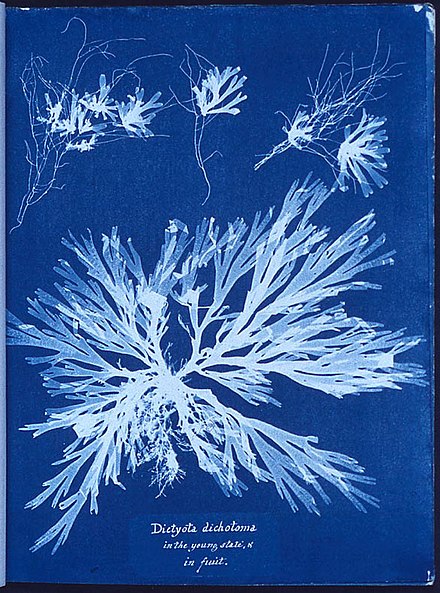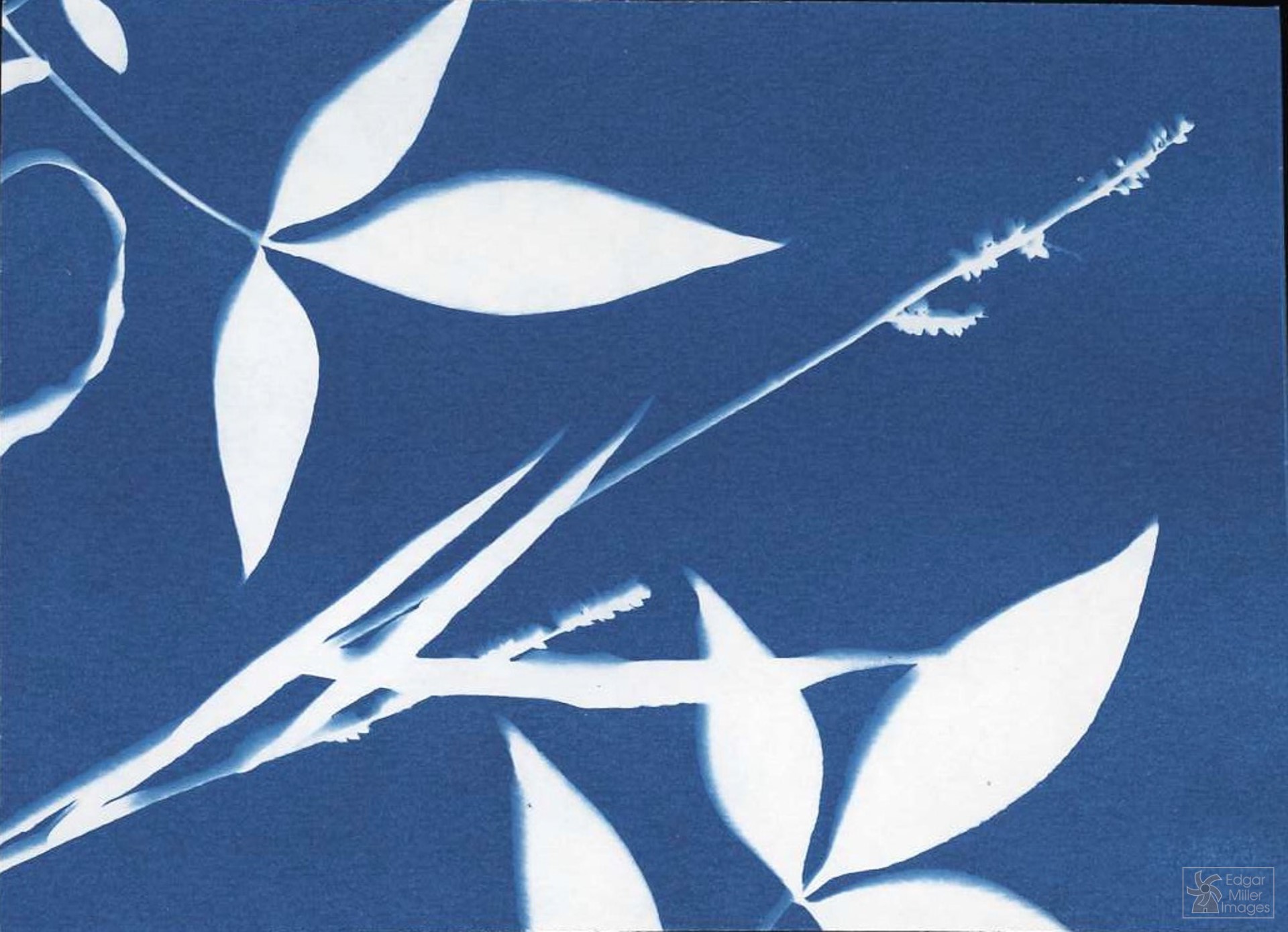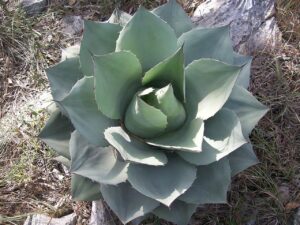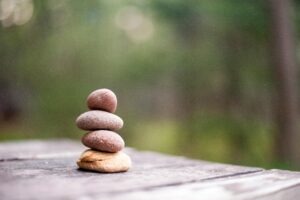A cyanotype is a magical thing. White shapes emerge ghost-like against an indigo-blue background, revealing a negative image in a striking monochrome palette.
Cyanotypes also carry a rich history of the earliest experiments in photography–and yet they are remarkably easy to create. You can learn all about cyanotypes and create your own magical blue images in an upcoming workshop with Fort Worth photographer Edgar Miller.

Cyanotypes were invented by English scientist Sir John Herschel in 1842. Herschel was a master of multiple scientific disciplines. As an astronomer, he studied the fuzzy but bright shapes that were later recognized to be far-distant galaxies; he named seven of the moons of Saturn and four of Uranus. He studied the flowers of South Africa and investigated the causes of color blindness and astigmatism.
He also made significant contributions to photography–including coining the word itself in 1839. He made one of the first photographs on glass that same year.
Botanicals in Blue:
Cyanotype Workshop
June 17, 11 am – 1 pm
Around 1840, Herschel began experimenting with coating paper with a solution of iron salts and then exposing it to sunlight. He theorized that light would convert the salts into a new chemical, ferric ferrocyanide, better known as the pigment Prussian blue. Where sunlight was blocked, the paper would remain white. Washing the paper in water would remove any unexposed chemicals and make the image permanent–i.e., “fixes” it. Herschel called the resulting print a “cyanotype.”

Cyanotypes were an immediate hit, and their usefulness in botanical illustration was quickly recognized. The first photographically illustrated book was created by pioneering photographer Anna Atkins, a friend of the Herschel family. Photographs of British Algae: Cyanotype Impressions was published in 1843. Later books contained cyanotypes of ferns and flowering plants. You can see many of Atkins’ cyanotypes in the book Anna Atkins: Blueprints in the BRIT Library.
Cyanotype was later adopted as a method for reproducing technical plans and drawings–which is where the term “blueprint” originates. For many decades, architectural plans were, in fact, blue.
Cyanotype was overtaken by other types of photograph as the 19th century wore on, but some photographers continued to embrace the process for its simplicity and artistic potential. Many contemporary artists use cyanotype as a medium.
Miller will introduce the cyanotype process and explore tips and techniques for creating these ethereal images using the flora of the Garden. You’ll leave with your own cyanotype creation and the skills to continue to explore this camera-less photography method. Registration for this class closes tomorrow, June 17, so sign up today!







